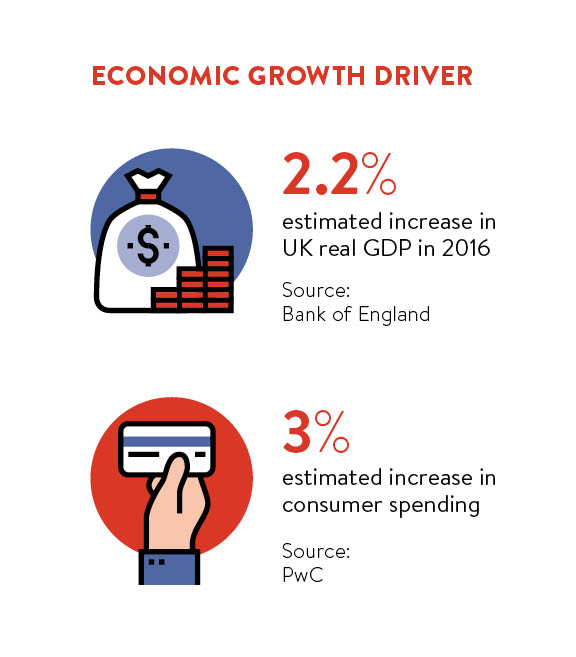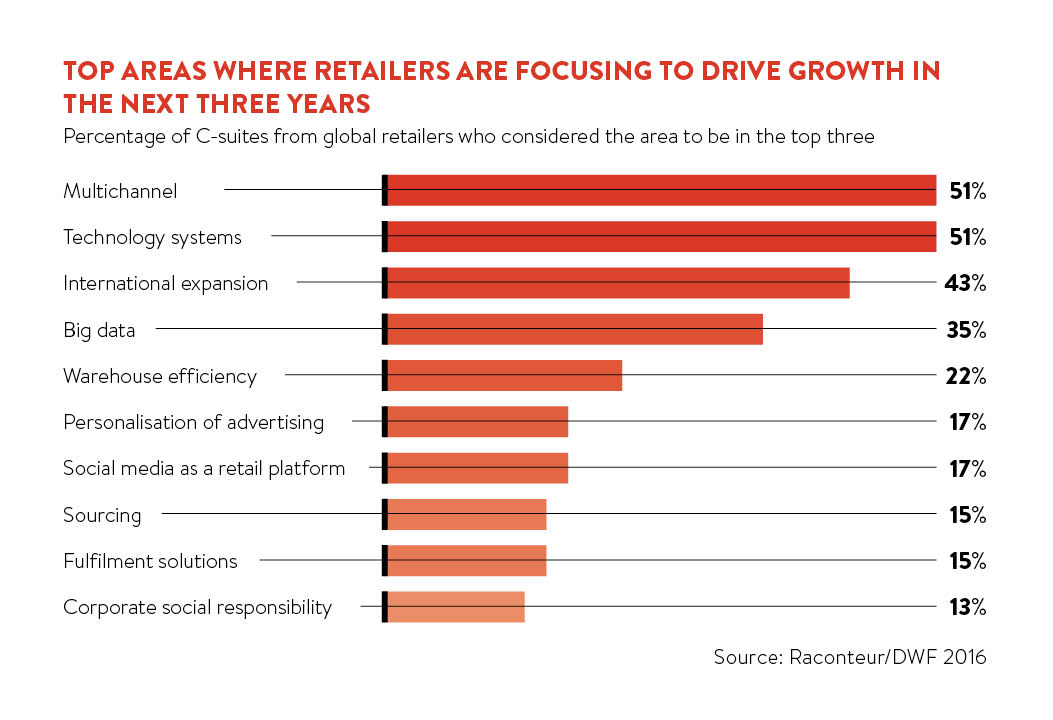Although the UK economy has been steadily recovering, the retail industry is struggling to keep pace with the growth as consumers choose to spend their money on leisure activities instead.
 The Office for National Statistics reported retail sales volumes decreased 1.3 per cent in March despite the Bank of England forecasting GDP growth of 2.2 per cent this year.
The Office for National Statistics reported retail sales volumes decreased 1.3 per cent in March despite the Bank of England forecasting GDP growth of 2.2 per cent this year.
David McCorquodale, head of retail at KPMG, believes that retail sales failing to keep up with GDP is due to retailers losing out to leisure experiences such as travel.
Retailers are truly locked into a survival of the fittest where only those that innovate will flourish
The government is also doing the retail industry few favours when it comes to taxation.
The British Retail Consortium’s Retail 2020 report forecasts the cost of the national living wage, projected increases in business rates and an apprenticeship levy will add £14 billion of costs on to the retail industry in the next four years.
This amounts to approximately 20 per cent of industry profitability. Retailers are truly locked into a survival of the fittest where only those that innovate will flourish.
Adapting to digital
The current BHS predicament is a salutary lesson in what happens if retailers stand still.
“BHS has not been investing in either its systems or interaction with its customers and you can’t just open your stores every day without much change and expect the market to keep flocking in,” says Mr McCorquodale.
Digital and in-store investment in a world where customers expect a wide variety of fulfilment options does not come cheap.
Between 2004 and 2014, costs in the retail industry rose 33.8 per cent as consumer spending only edged up 2 per cent, according to research from the British Retail Consortium (BRC) and retail analysts Conlumino.
As a way of comparison, in the previous decade costs jumped 19.6 per cent and consumer spending increased 5 per cent.

Customer experience
Waterstones has been at the forefront of the e-commerce onslaught, but has shown that through innovation it is even possible to battle the might of Amazon.
James Daunt, managing director of Waterstones, says he has combatted Amazon by making his company’s shops more fun and the shopping experience social.
“High street retailing is a recreational rather than a practical exercise now to a significant degree,” says Mr Daunt. “The days of an absolutely practical stand-and-deliver shop are limited.”
Waterstones has demonstrated this at its new Tottenham Court Road store in London, which features a bar and pop-up cinema in the basement.
Helen Dickinson, BRC chief executive, believes that in order to flourish in the current environment retailers need a “relentless focus on understanding and responding to the customer”.
She highlights how the high street is being reinvented to such an extent that online players are dipping their toe into bricks-and-mortar retailing.
Even Amazon is trialling a physical bookstore in its hometown of Seattle and it reportedly has plans for up to 400 shops in the United States.
“What customers are looking for are experience, excitement and theatre, and often the physical environment is a better place to do that,” says Mrs Dickinson. “It is not to say that it is not creatable in a digital environment, but we should not see them as separate anymore because, from a customer’s point of view, they are agnostic to the channel.”
Making online more immersive
Online shopping is still very much a transactional experience, but a big area of opportunity for retailers is recreating the offline experience online.
Ian Charles, chief executive at fast-growing gardening e-tailer Primrose, admits online retailers have not been great at experiential retailing.
He argues online retailers should take lessons from Harry Gordon Selfridge in making e-commerce an experience and believes video content is the key to achieving this.
“How do we make that a more immersive experience where it is more enjoyable?” asks Mr Charles. “It is no good it being like watching a TV programme because that is too passive.”
In a world where margins are shrinking, he also believes it is vital retailers innovate with their products to make the most of the higher margins before products become commoditised.
The quest for higher profit margins comes against a backdrop of net profitability across the industry falling from 6 to 8 per cent of sales pre-2007 to 3 to 5 per cent today, according to research from BRC.
“If we don’t innovate then we are not winning, so almost all of our best-selling lines will have some sort of intellectual property in there,” says Mr Charles.
The concept of developing products with a point of difference, such as the iPad, to take a greater share of consumers’ wallets is vital in a market with “massive overcapacity”, according to Mr McCorquodale.
International commerce
He also believes another market opportunity for innovative British retailers is international expansion. The rise of e-commerce means it is no longer necessary to take an expensive gamble by opening stores to test a new market.
British retailers even have the option of selling to the huge Chinese market by partnering Alibaba, a strategy currently being pursued by Sainsbury’s.
“We’ve got some of the strongest e-commerce retailers in the world who are used to competing in a very tight market,” says Mr McCorquodale. “With our British brands and innate ability to be good retailers, there is a real opportunity for us to grow internationally.”
Mr Daunt predicts British retail has not seen the last casualties, but the industry will come out stronger the other side.
“There will be losers and more BHSs,” he concludes. “People who do not invest, reinvent and remain current are going to fail, and I don’t celebrate that in any way, but there is a positive side to it, which is those that remain are getting better.”
It is a case of evolve or die.

Adapting to digital

